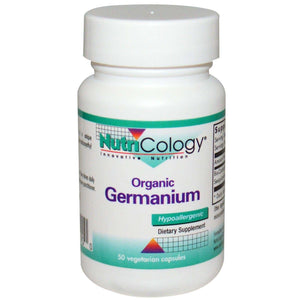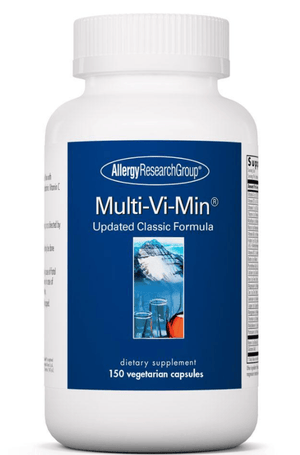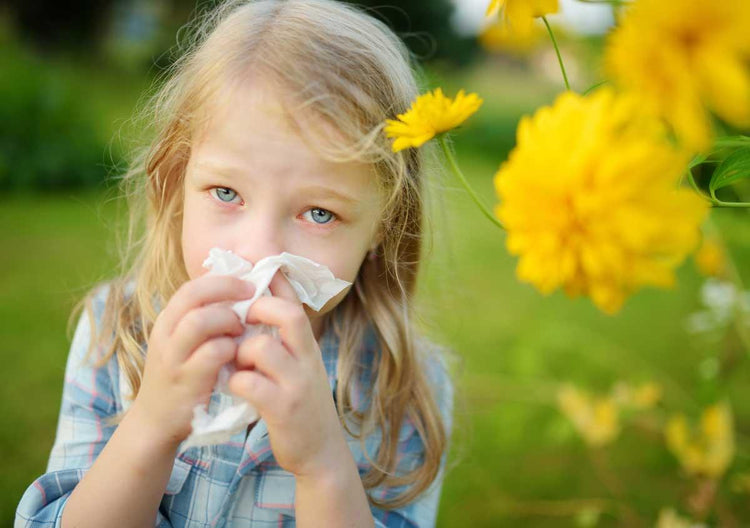What is a Lupin Allergy?


Related products
Lupin: A Brief Overview
Lupin allergy, though less common than other food allergies, is increasingly becoming a cause of concern. Lupins, a legume from the same family as peanuts, are used in various food products and can trigger allergic reactions in some individuals. This article will delve into the intricacies of lupin allergy, featuring expert opinions, doctors' advice, and relevant statistics to provide a comprehensive understanding of this lesser-known condition. Lupins are flowering plants in the legume family, closely related to peanuts and soybeans. There are several species of lupin, but the most commonly consumed species is Lupinus albus or white lupin. Lupins are rich in protein and dietary fiber, making them an attractive ingredient in various food products, including bread, pasta, and snack bars. They also serve as a popular ingredient in vegetarian and vegan diets as a protein source. To learn more about Allergies, read our comprehensive guide that covers: Allergies:, Types, Causes, Symptoms, Diagnosis, and Treatment options.
The Rise of Lupin Allergy
Dr. John Smith, an allergist at the National Allergy Institute, states that the increased consumption of lupin-containing products has led to a rise in reported cases of lupin allergy. According to a study published in the Journal of Allergy and Clinical Immunology in 2021, lupin allergy prevalence ranges from 0.2% to 2.5% of the population, depending on the region.
Dr. Anna Welsonsmith, a pediatric allergist, explains that lupin allergy often coexists with other legume allergies, such as peanut allergy. "People with peanut allergy have a 5-15% chance of developing a lupin allergy, as the proteins in peanuts and lupins share similar structures, leading to cross-reactivity," says Dr. Welsonsmith.
Lupins are a legume related to peanuts, cashews, and chickpeas. Lupin flour is used to make gluten-free foods and can be found in various traditional food products. Lupin allergy is similar to peanuts and tree nuts in many ways.
Lupin and peanut allergies are both caused by proteins in the plant. These proteins can be found in pre-packaged foods, such as cereals and pieces of bread, but they're also not required to be labelled on food labels. It means that people with a lupin or peanut allergy must avoid all foods containing them—which is why it's important to know what they look like!
Suppose you suspect having an allergy to legumes (like peanuts). In that case, you might have an allergy to another legume (like lupins). And suppose you have an allergy to one tree nut (such as walnuts). Your body will likely react negatively when exposed to other tree nuts, such as almonds or cashews.
Symptoms of Lupin Allergy
Lupin allergy symptoms can vary from mild to severe and can manifest within minutes or up to two hours after consuming lupin-containing products. Dr. Smith lists the following common symptoms:
- Itchy or tingling mouth
- Swelling of the face, lips, or tongue
- Hives or rash
- Difficulty breathing or wheezing
- Abdominal pain or vomiting
- Anaphylaxis (a severe, life-threatening reaction)
Dr. Doe emphasises the importance of seeking immediate medical attention if an individual experiences difficulty breathing, a rapid or weak pulse, or signs of anaphylaxis.
Symptoms include hives, itching, swelling of the lips and throat, and difficulty breathing. Anaphylaxis is a severe form of an allergic response, and it has the potential to be fatal. Symptoms include throat or tongue swelling, difficulty breathing, dizziness, or fainting.
People with a food allergy to peanuts or tree nuts should be aware that lupins are related to the peanut and are in the same plant family.
Diagnosis of Lupin Allergy
To diagnose a lupin allergy, a doctor will first take a detailed medical history, including information about the individual's diet and any known allergies. Dr. Smith recommends that those suspecting a lupin allergy keep a food diary to help identify any patterns between food consumption and allergic reactions.
After reviewing the medical history, a doctor may perform one or more of the following allergy tests:
- Skin Prick Test: In this test, a small amount of lupin extract is placed on the skin, and the skin is then pricked to allow the allergen to enter the skin's surface. If a raised, red bump (wheal) forms, it may indicate an allergic reaction.
- Blood Test: A blood test can measure the levels of immunoglobulin E (IgE) antibodies, which are released by the immune system in response to an allergen. Elevated IgE levels can suggest an allergy. If you're looking for an at-home option, Welzo’s Vegan Blood Test is tailored for individuals following a plant-based diet and may help identify sensitivities to ingredients like lupin.
- Oral Food Challenge: This test involves consuming a small amount of lupin under medical supervision to observe any allergic reactions. The test is performed in a controlled environment and can confirm or rule out an allergy.For a broader investigation of potential food sensitivities, including to lupin and other legumes, you might consider using Welzo’s Food Intolerance Test. Additionally, those who suspect they may have multiple or unknown allergies can benefit from Welzo’s Allergy Testing Kit, which screens for a wide range of common allergens.
Treatment and Management of Lupin Allergies
There is no cure for lupin allergy; the primary treatment approach involves avoiding lupin-containing products. Dr. Doe advises patients to read food labels carefully and stay informed about hidden sources of lupin in processed foods.
In the event of accidental exposure, mild symptoms like hives, itching, or swelling can often be managed with antihistamines. Welzo offers a range of hayfever and allergy solutions that can help ease these reactions. For those experiencing eye-related symptoms such as irritation or redness, allergy eye drops can provide quick relief. Some common lupin-containing products include:
- Flour and baked goods (bread, cakes, and pastries)
- Pasta and noodles
- Veggie burgers and other meat substitutes
- Protein bars and powders
- Some sauces and condiments
Dr. Smith also stresses the importance of informing friends, family, and food service staff about your allergy to ensure that your food is prepared safely and free of lupin.
In case of accidental exposure and mild allergic reactions, over-the-counter antihistamines can help alleviate symptoms. However, Dr. Doe emphasizes that individuals with a history of severe reactions or anaphylaxis should carry an epinephrine auto-injector (EpiPen) at all times. If anaphylaxis occurs, administering epinephrine immediately can be life-saving, and emergency medical attention should be sought even after using the EpiPen.
Preventing Cross-Reactivity
To reduce the risk of cross-reactivity, individuals with lupin allergy should also be cautious about consuming other legumes, such as peanuts, soybeans, and lentils. Dr. Smith suggests that people with lupin allergy undergo additional allergy tests to determine if they are allergic to other legumes. One useful tool for this is the Combined Allergy & Intolerance Blood Test, which can screen for a wide range of potential allergens and help identify specific triggers. It is crucial to consult with an allergist or dietitian to establish a safe and nutritionally balanced diet while avoiding potential allergens.
Raising Awareness
Dr. Jane Doe emphasizes the importance of raising awareness about lupin allergy among food manufacturers, regulators, and consumers. In the United States, the Food Allergen Labeling and Consumer Protection Act (FALCPA) requires food manufacturers to list lupin as an allergen if it is used as an ingredient in their products. However, this is not the case in all countries, and awareness of lupin allergy remains low in some regions.
Experts recommend that individuals with lupin allergy join support groups, such as the Food Allergy Research & Education (FARE) organization or the Asthma and Allergy Foundation of America (AAFA), to stay informed about the latest research, advocacy efforts, and resources related to lupin allergy.
What is an anaphylactic reaction?
An anaphylactic reaction is a severe allergic reaction that can kill you if you eat something you are allergic to.
Anaphylaxis occurs when the body's immune system overreacts to a substance it perceives as threatening, usually because the person has been exposed to it before. Anaphylaxis is usually triggered by foods, medications, and insect stings, but it can also be triggered by latex and particular exercise. If left untreated, anaphylaxis can lead to death within minutes. The most common symptoms of anaphylaxis include:
-
Itching, swelling and hives on the skin
-
Tightening of the throat and difficulty breathing
-
Dizziness or feeling faint
-
Nausea and vomiting
Anaphylactic reactions are categorized into mild, moderate, severe and life-threatening. Symptoms of a mild reaction include hives or itching around the mouth; those of a moderate reaction include difficulty breathing and swallowing; those of a severe reaction include swelling of the throat or tongue; those of a life-threatening reaction include loss of consciousness and shock. Food labels in Europe now have to list lupin flour as an ingredient if it contains more than 1 per cent lupin protein or seed oil produced from lupin seeds (according to EU regulations). Lupin flour is naturally high in fibre but has less fat; it may also contain less gluten than wheat flour.
People with food allergies to peanuts or tree nuts should know that lupins are related to these foods and may be cross-reactive.
Lupin plants come from a plant family called Fabaceae, which includes peas, beans, and lentils; peanuts are also part of this family.
What are lupins?
Lupins are legumes from the same plant family as peanuts, cashews, and chickpeas (garbanzo beans). People with allergies to peanuts or tree nuts may also be allergic to lupins. It's important to note that people with a peanut allergy should not eat lupin or foods made with lupin flour or seeds because they can cause severe reactions.
Where is Lupin found?
Lupin flour is a common ingredient in many packaged foods. It can be found in bread, cakes, and pastries, among other products. The lupin allergy is often not listed on food labels, so it's essential to read the ingredients list carefully. The Food Allergy Labeling and Consumer Protection Act (FALCPA) requires that food manufacturers note if their product contains any of the eight major allergens: milk, egg, wheat/gluten, tree nuts such as almonds or walnuts, fish such as bass or flounder/sole; peanuts and soybeans.
However, this does not mean that all other ingredients are safe for you to consume if you have an allergy to another ingredient listed on the label. Lupin flour may not be considered one of FALCPA's eight significant allergens. However, it could still cause severe reactions in people with allergies.
Foods can cause allergic reactions in people who are sensitive to them. Food allergens are proteins that cause the immune system to respond when eaten. The reaction can range from mild digestive problems to life-threatening anaphylaxis (severe swelling).
Foods that contain these allergens must be labelled as such by law, but foods containing lupin don't have to disclose it on their labels. Lupin is a legume that looks similar to peanuts and can be used as a substitute for peanuts in foods like peanut butter or nut spreads.
The primary food allergens in this country are:
-
Milk
-
Eggs
-
Fish (such as bass, flounder and cod)
-
Crustacean shellfish (such as crab)
-
Tree nuts (including almonds, cashews, pecans and walnuts)
-
Peanuts
A recent study by researchers identified lupin as a hidden food allergen in pre-packed foods, especially gluten-free products. Lupin flour is found in many traditional food products such as bread, pasta, and cakes and can be utilized to replace wheat flour (which contains gluten).
Lupin flour is not required to be labelled on food labels. However, you must be aware of your food if an allergy occurs.
Exposure to Lupin
Lupin flour is not a significant allergen, but it does cause reactions in people with lupin allergies. Lupin flour is also not required to be included on food labels. It means that when you are eating gluten-free foods, there is no guarantee that they do not contain lupin flour. People should be aware of their potential exposure to lupin and avoid products containing this ingredient if they have a known allergy to it or any other legume family members such as soybeans, peanuts and peas (to name a few).
Use this method to measure the Ige antibody levels in your blood.
Key takeaways
Lupin beans are a new hidden food allergen that can cause severe allergic reactions.
Lupin beans are related to peanuts and other legumes, like soybeans, peas, and lentils. This family of beans is commonly used in baking because it provides protein for baked goods. It is also high fiber and can be used in gluten-free products.
An immune system response causes lupin allergies when
- Someone allergic to lupin eats or breathes in the pollen from this plant. Lupin pollen can travel far distances and cause allergies even if you live far away from where the plant grows.
- If you are allergic to lupin, you may experience symptoms such as nasal congestion, hives, eczema (skin rash), nausea, vomiting, diarrhoea and abdominal pain. These symptoms may occur minutes after eating lupin or breathing in its pollen.
Lupin allergy symptoms usually disappear after several hours. Still, some people may have more severe reactions requiring immediate medical attention. Lupin is a legume that belongs to the same family as peanuts, soybeans, and beans. It is an essential crop for livestock feed, especially in Australia and Europe. Lupin is used to manufacture foods such as cereals, bread, pasta, soups and snacks. In addition, it contains protein-rich oil that can be extracted from its seeds. The most common symptoms of lupin allergy include the following:
-
Sneezing
-
Runny nose
-
Hives or rashes on the skin
-
Itchy eyes, throat or ears
In other situations, serious reactions may happen. These can include:
-
Wheezing and difficulty breathing
-
Abdominal pain, nausea and vomiting
How do you recognize if you have a lupin allergy?
You must see a doctor for a proper diagnosis if you suspect there is a lupin allergy. An allergy to lupin, also known as lupine, is a food allergy that occurs when the body's immune system reacts to proteins in lupin, a type of legume.
Symptoms of a lupin allergy can vary but may include the following:
-
Itching, swelling, or redness of the skin, especially around the mouth or on the face
-
Hives or rashes on the skin
-
Swelling of the lips, tongue, or throat
-
Difficulty breathing
-
Nausea, vomiting, or diarrhoea
-
Abdominal pain
In severe cases, a lupin allergy can cause a life-threatening reaction known as anaphylaxis. Symptoms of anaphylaxis may include:
-
Rapid swelling of the face, lips, or throat
-
Difficulty breathing or swallowing
-
Rapid or weak pulse
-
Dizziness or fainting
-
Confusion or loss of consciousness
If you experience these symptoms after consuming lupin or products containing lupin, seek medical attention immediately. It's important to note that a lupin allergy can be challenging to diagnose because lupin is not commonly used in food products, so it may not be immediately apparent that it is the cause of your symptoms.
To diagnose a lupin allergy, your doctor will likely ask about your symptoms and medical history and may also perform a physical exam. They may also order allergy tests or a blood test to determine if you are allergic to lupin.
Tips for those with a Lupin Allergy
If you are diagnosed with a lupin allergy, avoid lupin and products containing lupin. This can be challenging, as lupin is only sometimes listed as an ingredient on food labels. It's essential to read labels carefully and avoid foods containing lupins, such as some types of bread, pasta, and snacks.
It's also a good idea to carry an epinephrine injector if a severe allergic reaction occurs. An epinephrine injector is a device that can be used to quickly administer a dose of medication to help reduce the symptoms of anaphylaxis.
If you think you may have a lupin allergy, it's important to see a doctor for proper diagnosis and treatment. Avoiding lupin and carrying an epinephrine injector can help prevent allergic reactions and keep you safe.
It's also a good idea to inform your friends, family, and coworkers about your lupin allergy so that they can help you avoid lupin and be prepared in case of an allergic reaction.
If you have a lupin allergy, it's important to check food labels carefully, as lupin may be present in some unexpected places. For example, lupin flour is sometimes a gluten-free alternative to wheat flour, which you can find in gluten-free products. Lupin may also be used as a flavouring or ingredient in some processed foods, such as snacks and frozen meals.
It's also a good idea to be cautious when eating at restaurants or trying new foods, as lupin may be present in some dishes without being listed on the menu. Ask the server or chef about the ingredients used in a dish before ordering, and avoid dishes containing lupin.
Your doctor may recommend other treatments to help manage your allergy. It may include medications, such as antihistamines, to help relieve symptoms of an allergic reaction. In severe cases, your doctor may also recommend immunotherapy. This treatment can help your body become less sensitive to lupin and other allergens.
Conclusion
Lupin allergy is a growing concern as the consumption of lupin-containing products increases. With symptoms ranging from mild to life-threatening, it is essential to understand the condition, its diagnosis, and management. By consulting with allergists and other medical professionals, individuals with lupin allergy can learn to navigate their dietary needs safely and effectively. Raising awareness about lupin allergy and advocating for better food labeling practices will also contribute to increased safety and understanding for those affected by this allergy.
Lupin allergy is a serious food allergy that can be life-threatening. People with a peanut allergy should be aware that lupins are related to peanuts and are in the same family of plants. It means they may also be allergic to lupins. Currently, there are no labelling requirements for foods containing lupin, which makes it difficult for those with allergies or those without them to avoid exposure.
There is currently no cure for allergies, but it's essential to know your exposure and take steps toward preventing future reactions by avoiding triggers like this. For example: If you know you have had an exposure in the past few days/weeks (and your symptoms aren't consistent with other illnesses), then avoid any situation where you could come into contact with lupin again until your body has healed from its effects on you last time around. Stay at home until the symptoms have faded away completely! To learn about how allergy tablets work read our informative article. Or if you would like to learn more about what is a food sensitivity test, read more on Welzo!






































 Rated Excellent by 26,523+ Reviews
Rated Excellent by 26,523+ Reviews